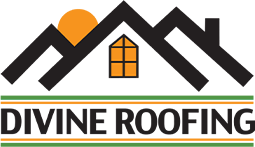We know that Divine Roofing, Inc. winter is here, and that means the Colorado Springs area is being dusted with snow. For homeowners, snow and storms can present a real problem for your roof: melted snow becomes water, and water which re-freezes forms into ice, specifically ice dams. Ice on your roof can be a real issue, causing water damage to your home that can include destroyed drywall, mold and mildew, wood rot, warped flooring, damaged carpet, and so much more. Thus, it’s in your best interest to remove ice from your roof as soon as possible.
However, there is a lot of misinformation out there about how to de-ice your roof, and sadly some homeowners that follow it either wind up hurting themselves or damaging their property. Specifically, many people accidentally damage their roof further by simply trying to remove the ice from it. If you want to avoid becoming one of them, here are a few valuable tips for how to de-ice your roof, and avoid causing damage that will need expensive repairs later.
Rake Your Roof
Your local home improvement store or tool warehouse will more than likely have a selection of snow rakes, which are not your typical garden rake. These long-handled aluminum tools have wheels on each side which allow them to quickly and easily roll along the surface of your roof without the edge scratching the surface or peeling valuable material off your roof. The benefit of these tools is that they allow you to quickly and easily pull snow and ice off your roof while you stand at a perfectly safe distance away. Be careful when using these to remove large ice dams, however, especially those where icicles have formed. You’ll want to make sure that the ground below is completely clear before dislodging any ice formations.
Heated Cables
Heated cables are pretty much exactly as they sound: a cable which plugs into your wall and uses electrical resistance to create heat, which then melts snow and ice and prevents it from turning into an ice dam that can damage your roof. Generally, these systems work best when they’re put on your roof before the first snow of the season. However, they can help you when ice forms as well. Be extremely careful when mounting these cables—make sure you don’t poke any nails or staples through your roof in order to secure it down.
Increase Attic Ventilation
Ice dams form because of a temperature difference between the high points of your roof along the ridge and the low points down near the eaves. Heat rises naturally, which means the air near the very highest point of your home is going to be much warmer than the air down near the lowest points of your roof. This heat melts snow, turning it into water, which then re-freezes further down your roof, forming ice dams. One of the easiest ways to solve this problem is to simply balance out the temperature in your attic by improving ventilation. Make sure your air intake vents down near the eaves are clean and clear, allowing a good amount of air in. Likewise, you should have an attic vent located along the ridge near the highest points of your roof so the most heat can escape. This creates a more consistent roof temperature, and thus reduces the chances of ice formation.
Add Attic Insulation
Conversely, if you want to prevent ice dams, you’ll want to limit the amount of heat which escapes your home into your attic. Replacing or bolstering your attic insulation can help with this, keeping more heat in your home where you want it and out of your attic where it can cause problems. Specifically, check around areas like light fixtures or other ceiling-mounted paraphernalia, which is usually where most air leaks are created.
Preventative Measures
There’s an old adage that says “an ounce of prevention is worth a pound of cure” and that absolutely holds true for your roof. One of the best things you can do to de-ice your roof without damaging it is to prevent ice from forming in the first place. Heated cables (as we discussed earlier) can help with this, but the best thing to do is simply make sure your attic ventilation is up to par, which will lead to not only a more efficient home, but little to no ice formation on your roof.
Schedule your roof repairs by calling the Colorado Springs roofers from Divine Roofing, Inc. at (719) 497-1005.

